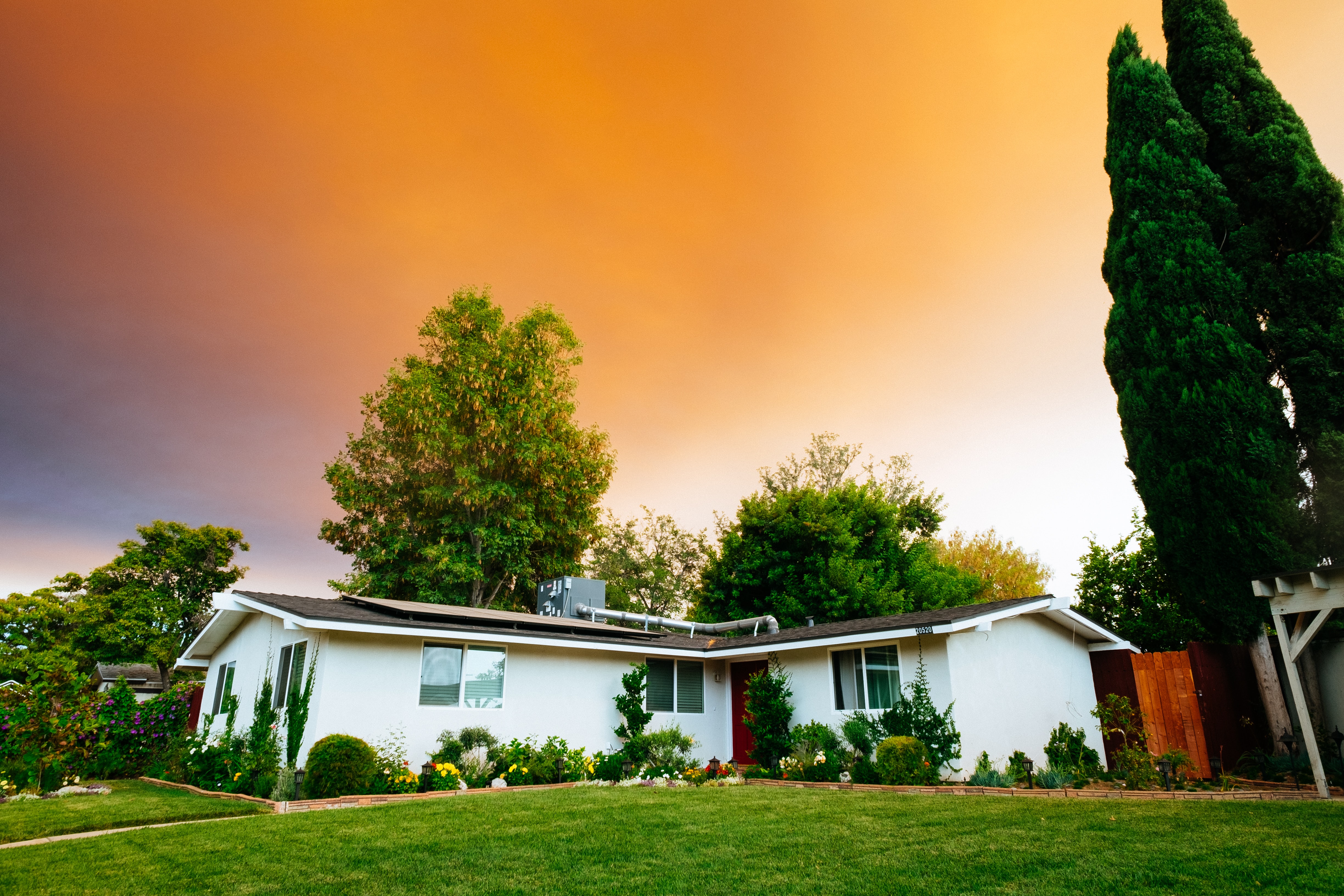California’s New Home-Hardening Law: Everything You Need to Know

2020 was notable for a lot of things — and for California residents, part of this was the record-setting fire season. Over 4.1 million acres of California burned in 2020, with five of the state’s six largest fires in history happening during the calendar year.
Unfortunately, these statistics represent the continuation of a trend, rather than an outlier. California’s wildfire risk seems to grow each year, putting lives and property at risk.
In response to steadily worsening fire conditions, 2019 saw the passage of new laws regarding homeowner responsibilities for those who live in wildfire hazard zones, sometimes also designated as State Responsibility Areas.
Some aspects of these laws have already gone into effect, impacting Natural Hazard Disclosure reports and more, while other elements will come into effect later. Here is what buyers and sellers should know about these “home hardening” laws.
What Does it Mean to ‘Harden’ Your Home?
In terms of the new state laws, hardening your home refers to protecting it against fire danger. With thousands of homes destroyed in 2020 alone, any step you can take to reduce your home’s risk from fire is well worth it.
There are two primary aspects to hardening a home against fire danger: creating a defensible space and ensuring that the structure itself is fire resistant.
In California, the defensible space should extend 100 feet from the home in every direction. There are two zones in a defensible space, with the area closest to the house requiring the most stringent methods.
In this area, all dead plants, weeds, and pine needles should be removed from the yard and roof. Trees should be trimmed so that no branches hang over the roof, and to ensure that there is at least 10 feet of space between the branches of separate trees. Flammable plants and items should be removed from areas near decks and windows.
The second zone requires the creation of horizontal and vertical separation between trees and shrubs. Any grass in this area should be mowed shorter than four inches, and fallen leaves and needles should be removed. With proper spacing, it becomes harder for embers to spread, and also creates a safer area for firefighters to combat a wildfire.
A home’s construction is central to it being hardened against fire threats. Fire-resistant roofing materials such as metal or slate, dual-pane windows and enclosed eaves can go a long way in reducing fire risk. The use of non-combustible insulated concrete forms during construction will naturally present a much lower risk than a log cabin-style home. Brick or stucco siding is much more fire-resistant than wood planks or shingles.
While such construction measures are no guarantee that a home won’t be destroyed in a major blaze, they can minimize damage or give you precious time to escape if a fire catches you unawares.
What’s In the New Laws?
These home hardening measures are so important, that they have been further codified in California state law. Currently, sellers must provide potential buyers an NHD report that includes information on the property’s fire risk. The state will also provide enhanced enforcement of defensible space rules.
Beginning in 2020, the Office of the State Fire Marshal developed a model defensible space program to be adapted as needed by cities and counties. For example, in San Diego County, the first zone of a defensible space is required to extend 50 feet, rather than 30.
In addition to providing more guidelines for homeowners, these laws introduced plans for fire marshals to make site inspections in high-risk areas, and to notify and cite homeowners if any violations were observed. Homeowners would be required to make any necessary corrections to their property to ensure compliance.
Changes related to Natural Hazard Disclosure information are being rolled out in a gradual manner. In 2020, sellers were required to supply a copy of final inspections that included home hardening compliance information. Beginning January 1, 2021, sellers of homes constructed prior to 2010 must provide information about wildfire risk stemming from a lack of fire hardening.
Additional requirements to be introduced in July 2021 will require sellers to provide documentation proving that the property complies with the area’s defensible space laws, in addition to an NHD report.
In July 2025, the final measure will go into effect, requiring that Natural Hazard Disclosures for wildfire hazard areas also include a list of affordable upgrades that can be done to fire harden a home. This list must designate which tasks have already been completed by the seller.
Notably, most of the legal changes focus on what happens when someone living in a fire hazard area sells their home. Buyers have the right to be aware of the potential risks of the property they are interested in. Understanding what fire mitigation measures have been taken — or still need to be taken — enables them to make an informed decision that is right for their family.
Preparing for Wildfire Danger
Whether you already live in an area that is prone to wildfire hazards or are considering buying a property in one of these areas, understanding California’s home hardening laws is an absolute must. An NHD Report ensures that the danger is disclosed during a home sale, but perhaps even more important is the process of protecting the property from future fire hazards.
By following recommended — and now, required — guidelines for fire protection, you will protect yourself and your neighbors from one of the region’s most persistent threats.

